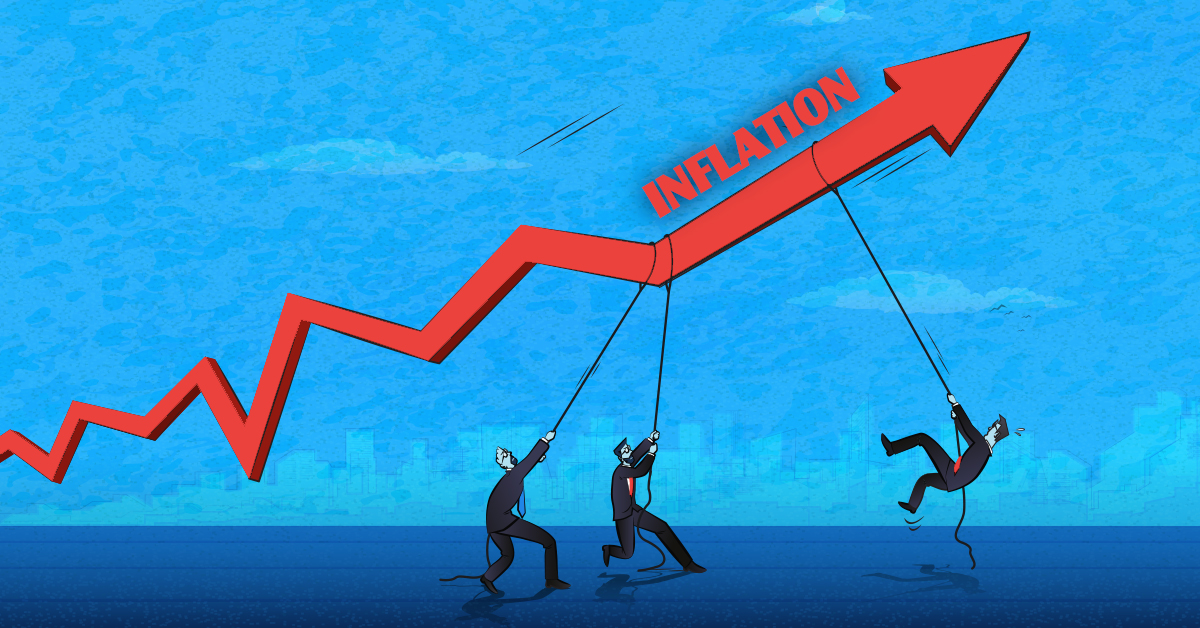We may have hoped differently at the end of 2022, but high inflation is having its say in 2023. While this is creating a tough playing field globally, it’s a great opportunity for procurement teams to create value, build resilience and become that all-important strategic function organisations need them to be.
Procurement teams have a unique vantage point to identify and navigate the risks associated with inflation. By adopting a proactive approach, organisations can anticipate and prepare for potential price increases.
The strategies we outline below can help procurement teams navigate and minimise the impact of inflation, but they cannot single-handedly “fight” or eliminate inflation entirely. Procurement does not have complete control over the broader macroeconomic forces that drive inflation.
But by adopting our advice, procurement teams can, to a degree, insulate their organisations and help them become stronger performers, even in adverse market conditions.
6 Strategies to Fight Inflation
Direct strategies
Reduce other costs
Gaining visibility doesn’t only identify where inflation poses the greatest risk; it also uncovers hidden costs elsewhere in the supply chain.
Sometimes, there isn’t much procurement can do to stop a 10% category price rise due to inflation. But procurement may be able to identify cost leakage elsewhere by reviewing invoices, purchasing orders and contracts. By stopping that leak, they can mitigate the inflationary price rise and keep their overall costs as they are.
By having a greater diversity of suppliers within a category, procurement gives itself more bargaining power at the negotiation table.
Improve supplier relationships
As well as diversifying the supplier base, procurement can work on building stronger relationships with their incumbents. Suppliers are also feeling the pinch of inflation, which is why they’ve increased their prices. It’s worth identifying those suppliers who are experienced enough and have the vision to recognise and adopt strategies to fight inflation.
Procurement should work with these suppliers to identify opportunities for cost savings, which may include alternative materials, negotiating better prices or reducing transportation costs.
In return, your organisation might look at offering longer term contracts or working with these suppliers to identify new business opportunities. Perhaps both parties can contribute to promotional campaigns that benefit everyone. All these efforts help build a strategic supplier relationship.
Predict, don’t react
You can’t prevent inflation, but you can predict it and prepare for it ahead of time. If you can do this, then strategic measures to fight the effects of inflation can be put in place before the inflation occurs. Scrambling to offset inflation when it’s already upon you only leads to the most detrimental results.
If we accept that inflation will always be a risk, then we should behave in a manner that reflects that. One option is to stockpile material when its price is low and draw upon it when the price spikes. Obviously, this brings stockpiling costs into the equation, so organisations will have to weigh up the cost benefit of paying for storage against the material’s high price when inflation hits.
Indirect strategies
Build your brains trust
This one is a long-term solution but, in all likelihood, the most effective. While cutting edge AI is integral to modern procurement, a procurement team is only as good as the human talent it has to draw on. The right people with the right skillsets will bring massive cost-savings benefits to the organisation.
This is about market analysis, suppler relationship and category management. Organisations need to decide whether to train up the human resources they already have, or recruit that which is missing.
Get digitised and gain visibility
For most organisations, high inflation is not affecting the entire supply chain. Some products and services may actually be falling in price while others rise. Businesses need to identify the categories that are most affected by current inflation so they know where to concentrate their efforts and they know what to keep an eye on.
Some organisations have employed software that tracks their most vulnerable purchases and the risks associated with them, and models inflation exposure in real time. When new risks emerge, this software notifies the organisation, giving decision-makers time to put strategic defences in place.
Diversify the supplier base
Diversifying suppliers is an effective strategy for procurement teams to mitigate the effects of high inflation. By having a diverse supplier base, procurement teams can reduce their reliance on any single supplier and minimise the impact of price increases.
Procurement teams can identify potential new suppliers by using supplier networks, joining industry associations or working with supplier management companies. This is a good opportunity to work with local suppliers, who are typically more agile and can offer reduced transportation costs and lead times – a bonus in an inflationary world.
Comprara can help you drive your strategic innovation
These are just some of the ways that procurement can help their organisation build resilience. To learn more about ways in which you can manage and even mitigate inflationary pressures, get in touch with the team at Comprara today. We have deep experience when it comes to helping organisations build resilience and drive strategy through procurement and supply chain initiatives.








